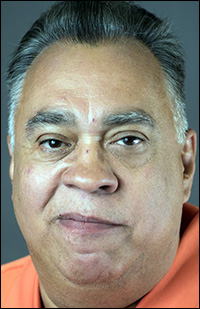There is much that can be predicted about the future of the Internet of Things (IoT). For example, based on various forecasts, we believe that the total number of IoT connections is likely to reach 27 billion in 2025, and that $6 trillion will have been spent on IoT solutions between 2016 and 2021.
In the midst of this predictable promise for the industry, there’s another side of IoT projects that’s much less established. Understanding when IoT solutions become subject to communications taxes and regulatory oversight is a complicated, and can put companies in a challenging and potentially costly tax predicament.

Taxable IoT vs. Non-taxable IoT
At the core of this issue is the “I” in “IoT.” Because many IoT projects rely on a bring-your-own-internet (BYOI) model, it’s often unlikely that adding an IoT device to an existing network will have an impact on communications taxation. However, in an increasing number of instances, this BYOI model is not being leveraged, particularly in applications such as agriculture and industrial. For these IoT offerings and others like them, it’s important to note that taxability changes once a device is supplied with its own dedicated data connection.
This means it is becoming increasingly important to pay close attention to the legal definition of “internet access” from a communications tax perspective. State and local governments have been prevented from taxing monthly payments made to internet service providers, or ISPs, under the Internet Tax Freedom Act (ITFA), a three-year moratorium that was extended several times before being made permanent in 2015.
However, while this longstanding legislation and the nature of many consumer-focused IoT solutions has caused companies to become accustomed to non-taxable IoT, things are starting to shift with a growing number of standalone IoT connections on the horizon.
Determining the Taxability of IoT Projects
For a device’s data connection to count as tax-free “internet,” it must allow a connection to the World Wide Web for such activities as browsing, streaming or launching apps. If the connection fails those tests and is simply being used to transmit data to and from the device, there’s a good chance the connection will not fit the legal definition of an ISP service.
For example, consider how the smart thermostat uses home or business Wi-Fi to communicate with a smartphone for remote access. Although there’s no additional Web functionality and no Web browsing associated with the thermostat itself, it’s using a BYOI connection to function. For this reason, the addition of the thermostat to the owner’s network is unlikely to create any tax implications.
In contrast, an in-the-field farm-monitoring device, used to communicate real-time data regarding topography and temperatures, might rely on air cards to transmit data. The device uses its own designated cellular-based internet connection, without access to the Web, opening up the argument that this data connection is part of a private wide-area network (WAN) that may be subject to significant tax and regulatory obligations.
It’s not just agricultural and industrial equipment that stands to be impacted by the shifting winds of IoT taxability. There are many instances when non-traditional telecommunications companies head into the telecommunications space as the result of an innovation—often without even realizing it. As an example, consider the development of the hot new category of consumer devices designed to support video chat. To determine whether a new IoT project such as this is likely to be subject to communications taxes and regulations, it’s important to answer questions such as:
• Does the new IoT device offer the capacity for making phone calls?
• Could the sale of a new device be potentially viewed as the sale of a cell phone or video conferencing equipment?
• Will there be an additional monthly fee to use the video chat service?
• Will the service use Bluetooth to synch to current cell phone monthly data plans? Or will it leverage existing VoIP services through existing internet providers?
The answers to these questions and others like them can lead to very different tax treatments. Understanding when an IoT project is subject to oversight is critical to remaining compliant and preventing costly audits and penalties.
These are just a few examples, and many cases aren’t clear-cut. Overall, it’s important to avoid falling into the trap of assuming a connected device won’t be subject to state communications taxes or federal regulatory fees (and vice versa). Remaining compliant requires staying up-to-date on the latest federal and state tax law developments and definitions with each new innovation. As companies race to invest in IoT-related offerings, failure to adequately address the potential impacts of communications tax compliance up front can lead to misinterpretations—not to mention otherwise avoidable fees and penalties.
Nothing in this article is intended to provide tax or legal advice, including legal opinions, tax opinions or tax management advice. Readers should conduct due diligence and seek the assistance of a qualified legal, tax or accounting professional.
Tony Susak joined Avalara in March 2017 as the general manager of Avalara’s Communications Business Unit. Prior to joining Avalara, he served as the director of tax for AT&T, where his team had responsibility for calculating, filing and remitting millions of dollars annually across every jurisdiction in the United States and many jurisdictions abroad. Prior to AT&T, Susak held similar positions with Cricket Communications, Cingular Wireless, Virgin Mobile and General Motors’ OnStar division. In these roles, he also helped to develop policy and influence legislation involving vehicle telematics and communication taxes. Susak holds an MBA with Distinction from the Keller Graduate School of Management and a Bachelor of Science degree in accounting from Indiana State University. He is a member of the American College of Forensic Examiners.

